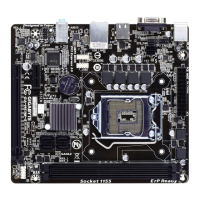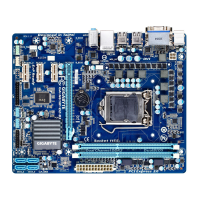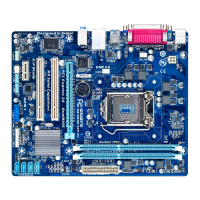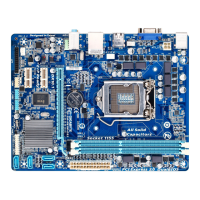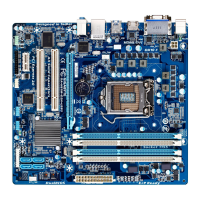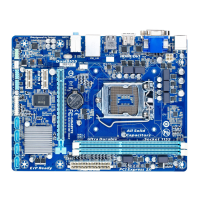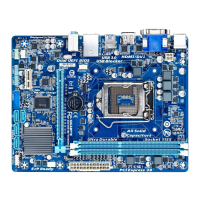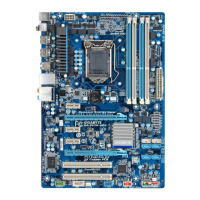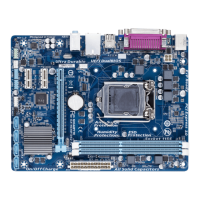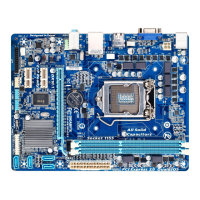
Do you have a question about the Gigabyte GA-H61M-S1 and is the answer not in the manual?
| Non-ECC | Yes |
|---|---|
| Memory voltage | 1.5 V |
| Memory channels | Dual-channel |
| Memory slots type | DIMM |
| Number of memory slots | 2 |
| Supported memory types | DDR3-SDRAM |
| Maximum internal memory | 16 GB |
| Supported memory clock speeds | 800, 1066, 1333, 2200 MHz |
| Supported memory module capacities | 2GB, 4GB, 8GB |
| Processor socket | LGA 1155 (Socket H2) |
| Processor manufacturer | Intel |
| Compatible processor series | Intel Celeron, Intel Pentium |
| Maximum number of SMP processors | 1 |
| Number of SATA II connectors | 4 |
| Number of Parallel ATA connectors | 0 |
| USB 2.0 ports quantity | USB 2.0 ports have a data transmission speed of 480 Mbps, and are backwards compatible with USB 1.1 ports. You can connect all kinds of peripheral devices to them. |
| Component for | - |
| Power source type | ATX |
| Motherboard chipset | Intel® H61 |
| Audio output channels | 7.1 channels |
| Motherboard form factor | micro ATX |
| Compatible operating systems | Microsoft Windows 7/Vista/XP |
| Supported storage drive interfaces | SATA II |
| On-board graphics card | No |
| Parallel processing technology support | Not supported |
| PCI Express slots version | 3.0 |
| LAN controller | Realtek RTL8111F |
| Networking features | Gigabit Ethernet |
| BIOS type | EFI AMI |
| ACPI version | 2.0a |
| Depth | 174 mm |
|---|---|
| Width | 226 mm |
Diagram showing the physical arrangement of components on the motherboard.
Lists the items included in the motherboard package.
Diagram illustrating the functional connections between motherboard components.
Important safety guidelines before installing hardware components.
Details the technical specifications of the motherboard and its components.
Step-by-step guide for installing the Central Processing Unit (CPU).
Instructions for installing RAM modules into the motherboard sockets.
Guide on how to install expansion cards like graphics or network cards.
Explains the function of ports located on the motherboard's rear panel.
Details the internal headers and connectors on the motherboard.
Overview of the BIOS Setup main interface and navigation options.
Access to CPU, memory, and voltage settings for performance tuning.
Configuration for system language, date, time, and access level.
Settings for boot order, CPU features, and virtualization technologies.
Configuration for onboard devices like SATA, USB, audio, and LAN.
Settings to manage system power consumption and sleep states.
Options to save BIOS changes, load defaults, or exit the setup utility.
Guide to installing essential chipset drivers for system functionality.
Instructions for installing bundled application software like Splashtop Connect.
